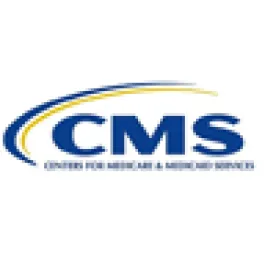On October 31, 2019, the Centers for Medicare and Medicaid Services (CMS) finalized its 2020 payment and policy changes rule for Home Health Agencies (HHA Rule). The final rule is scheduled to be posted in the Federal Register on November 8, 2019, and allows for comments until December 30 in advance of its January 1, 2020, effective date. The HHA Rule makes changes to the Home Health Prospective Payment System (HH PPS), including the implementation of the Patient-Driven Groupings Model (PDGM), and makes other policy changes for home health agencies to the Home Health Value-Based Purchasing (HHVBP) Model and the Home Health Quality Reporting Program (HH QRP). These changes further the shift to a value-based payment system focusing on patient need over volume of care.
Home Health Prospective Payment System (HH PPS)
The most significant change to the HH PPS is the implementation of the PDGM, an alternate case-mix adjustment methodology, which overhauls the payment structure for home health and better aligns reimbursement with patient needs. CMS explains in the final rule that “the PDGM relies more heavily on clinical characteristics and other patient information to place patients into meaningful payment categories and eliminates the use of therapy service thresholds.” The HHA Rule changes the unit of payment from a 60-day episode of care to a 30-day episode of care which will be reimbursed at a standardized amount, adjusted by PDGM case-mix weights. Case-mix weights are generated by classifying each 30-day period of care through several clinical characteristics and other patient information (timing, admission source, clinical grouping, functional impairment level, and comorbidity adjustment) into a PDGM payment group or Home Health Resource Group (HHRG).
The rule requires that CMS calculate the 30-day payment amount for calendar year (CY) 2020 in a budget-neutral manner such that estimated aggregate expenditures under the HH PPS during CY 2020 are equal to the estimated amount that otherwise would have been made under the HH PPS during CY 2020 in the absence of the change to a 30-day unit of payment. CMS set the CY 2020 30-day payment amount at $1,864.03, which reflects an adjustment of -4.36 percent to maintain overall budget neutrality under the PDGM. The amount will be adjusted by the case-mix weights as determined by the variables in the PDGM.
Other policy changes to the HH PPS include: (i) finalizing changes to the fixed-dollar loss ratio to 0.56 for CY 2020 under the PDGM to ensure that outlier payments as a percentage of total payments is closer to, but no more than, 2.5 percent, as required by law, (ii) updating the use of wage index data for the home health wage index, and (iii) allowing therapist assistants to furnish maintenance therapy under the Medicare home health benefit.
Home Health Value-Based Purchasing (HHVBP) Model
The HHVBP Model is a value-based care test model required for all Medicare-certified HHAs providing services in Arizona, Florida, Iowa, Maryland, Massachusetts, Nebraska, North Carolina, Tennessee, and Washington. The Model adjusts Medicare payment rates up or down based on each HHA’s Total Performance Score (TPS) in a given performance year, which is comprised of performance of certain measures and quality metrics. The HHA Rule requires publication of these scores on CMS’s website to allow consumers to evaluate competing HHAs, in an attempt to encourage quality care.
Home Health Quality Reporting Program (HH QRP)
The HHA Rule proposes to adopt the following changes to the HH QRP:
-
Removes the Improvement in Pain Interfering with Activity Measure in an effort to mitigate any unnecessary or over-prescription of opioids.
-
Adds Transfer of Health Information to Provider–Post-Acute Care quality measure. This measure will be calculated by “the proportion of quality episodes with a discharge/transfer assessment indicating that a current reconciled medication list was provided to the admitting provider at the time of discharge/transfer.”
-
Adds Transfer of Health Information to Patient–Post-Acute Care quality measure. This measure will be calculated by “the proportion of quality episodes with a discharge assessment indicating that a current reconciled medication list was provided to the patient, family, and/or caregiver at the time of discharge.”
-
Updates the specifications for the Discharge to Community- Post Acute Care Home Health Quality Reporting Program Measure to exclude baseline nursing facility residents from the measure.
These changes are effective January 1, 2020. CMS is accepting comments on the final rule until 5:00 p.m. on December 30, 2019. Comments can be sent electronically, by regular mail, or by express or overnight mail.
This post was co-authored by Michael Lisitano, legal intern at Robinson+Cole. Michael is not yet admitted to practice law.



 />i
/>i

